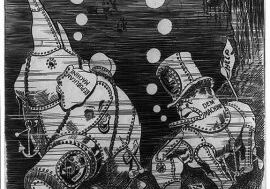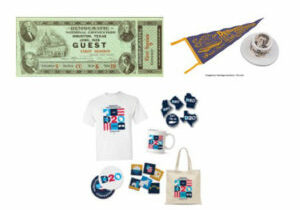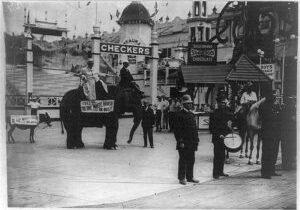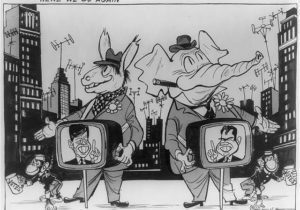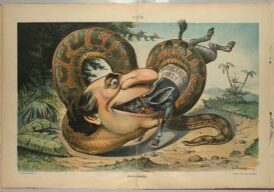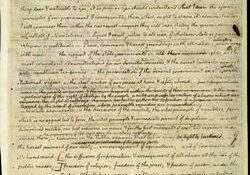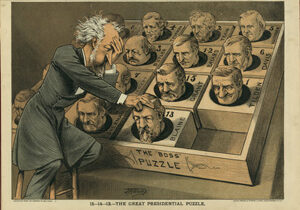Lesson Plans
How Well Do Our Parties Represent Us?
Students analyze primary sources to better understand the two-party political system in the United States through investigation of the manner in which political parties gained and nurtured constituents in the later 19th century and actions they took in the mid-20th century that brought satisfaction/dissatisfaction among constituents. After, students identify one significant reform either in electoral processes or at the party level that could result in greater responsiveness to the will of the people.
Technology & Presidential Nominating Conventions
Students analyze primary sources and other resources from 1928, 1960, and 2020 to investigate and consider the impact changes in technology had on presidential nominating conventions. After, students envision future technologies and how they might be used to impact future presidential elections.
Political Parties – Beginning
Students investigate the major political parties in the United States and the role they play in U.S. elections, then create political parties focused on issues affecting students at their school.
Political Parties – Intermediate
Students investigate the two-party system in the United States and analyze partisan priorities, then create political parties that speak to issues affecting young people.
Political Parties – Advanced
Students gain a deeper understanding of political parties and the role they play in U.S. elections, evaluate how partisan priorities have changed over time, and then create political parties that speak to issues affecting young people as well as people of other generations.
The Formation of Political Parties
Students work in groups to investigate a case study using primary sources to help answer the question “Why do political parties form?” Students then use their learning to advise one of the two major U.S. political parties about a fledgling new "Teen Party".
Faction and Democracy
Students write a multi-paragraph argumentative letter in opposition to a proposed bipartisan Senate bill to eliminate factions outside of the two major parties based on the ideas put forth by James Madison in Federalist No. 10, George Washington in his Farewell Address, and Thomas Jefferson in his First Inaugural Address.
Presidential Election Campaigns: Goal!
Students investigate presidential elections in the early 20th century, then read contemporary newspaper articles related to contemporary presidential election campaigns from different ends of the political spectrum and present their learning through creation of a modern political cartoon.
Party Factions
Students investigate the effect of party factions on the 1880 U.S. presidential election, then compare and contrast that to the 2016 U.S. presidential election and consider applicable parallels to the present.
States of the Union
Students compare and contrast key words and themes from presidential State of the Union addresses and then consider what themes they think should be emphasized in the next State of the Union address.

